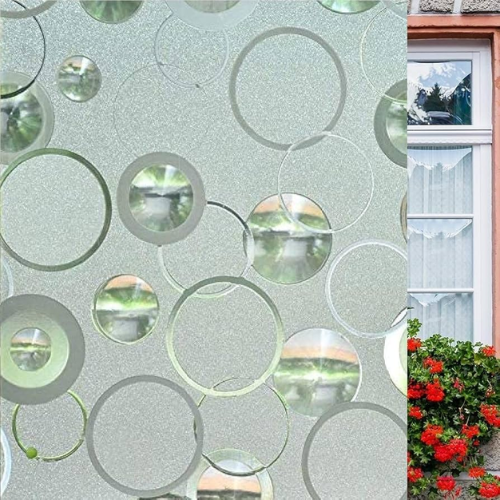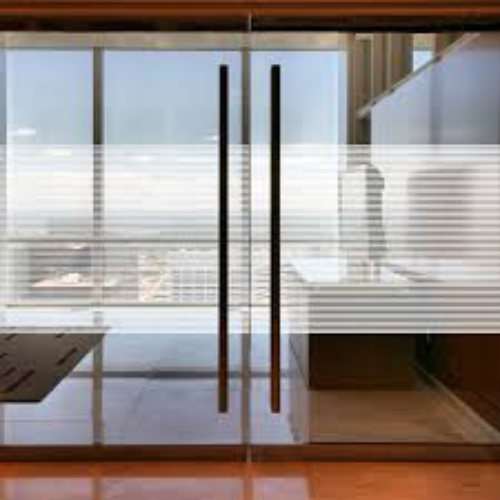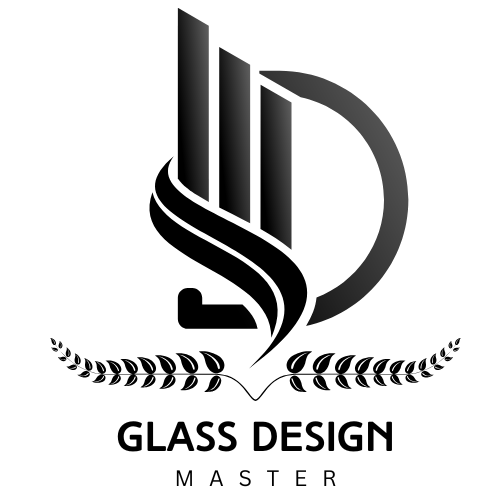Frosted glass has long been a staple in architecture and interior design, offering both aesthetic appeal and functional benefits. Its unique ability to provide privacy while allowing light to permeate makes it a favored choice in various settings. In recent years, advancements in technology and design have ushered in new trends and applications for frosted glass, enhancing its versatility and appeal.

Types of Frosted Glass
Frosted glass comes in various types, each created using different techniques and suited for specific applications. Here are the most common types:
1. Acid-Etched Frosted Glass

- Created by applying acid to the surface of the glass to achieve a smooth, matte finish.
- Produces a uniform, non-glare surface with a soft, silky appearance.
- Ideal for shower enclosures, office partitions, and decorative windows.
2. Sandblasted Frosted Glass

- Manufactured by blasting sand or abrasive material onto the glass surface under high pressure.
- Allows for customized patterns, logos, and textures.
- Commonly used in hotels, corporate offices, and luxury homes.
3. Film-Coated Frosted Glass (Frosted Window Film)

- A frosted effect is achieved by applying a vinyl or polyester film to the glass surface.
- Offers an affordable and temporary solution compared to permanently frosted glass.
- Used in offices, bathrooms, and rental properties where removability is needed.
4. Laminated Frosted Glass

- Made by sandwiching a frosted interlayer (such as PVB or EVA) between two glass panels.
- Provides enhanced safety, soundproofing, and UV protection.
- Suitable for banks, hospitals, and high-security areas.
5. Smart Switchable Frosted Glass (Privacy Glass)

- Uses electrical technology (PDLC or SPD) to switch between transparent and frosted states.
- Offers on-demand privacy with the flick of a switch.
- Commonly used in conference rooms, luxury homes, and healthcare facilities.
6. Ceramic-Frit Frosted Glass

- Created by printing ceramic-based ink onto glass and then baking it at high temperatures.
- The design is permanent, scratch-resistant, and UV-stable.
- Used in facades, railings, and decorative applications.
Benefits of Frosted Glass
- Privacy Without Sacrificing Light: One of the primary advantages of frosted glass is its ability to obscure visibility, ensuring privacy in spaces like bathrooms, offices, and conference rooms, while still permitting natural light to filter through.
- Aesthetic Versatility: The matte finish of frosted glass adds a touch of elegance and modernity to interiors. Its subtle texture can complement various design styles, from minimalist to contemporary.
- Safety and Durability: Often combined with tempered or laminated glass, frosted glass enhances safety by reducing the risk of injury upon breakage. Its surface also offers increased friction, making it suitable for applications like stair railings.
- Energy Efficiency: By diffusing light, frosted glass reduces glare and can contribute to energy savings by minimizing the need for artificial lighting. Additionally, it offers some insulation properties, aiding in temperature regulation within spaces.
Latest Trends in Frosted Glass

- Dynamic Patterns and Custom Designs: Modern frosted glass now features dynamic and fluid patterns, moving away from traditional static designs. These customizations allow for personalized aesthetics that can align with a company’s branding or an individual’s taste. Techniques like engraving and sandblasting further enhance decorative possibilities.
- Integration with Smart Glass Technology: The advent of smart glass has revolutionized frosted applications. This technology enables glass to transition between transparent and frosted states, offering on-demand privacy and contributing to energy efficiency by controlling light entry.
- Gradient Frosting: A sophisticated trend involves creating a gradual transition from fully frosted to transparent areas on the glass. This gradient effect maintains openness while providing necessary privacy, adding a contemporary flair to spaces.
- Biophilic Designs: Incorporating nature-inspired patterns, such as leaves or floral motifs, into frosted glass aligns with the biophilic design trend. This approach fosters a connection with nature, promoting well-being and enhancing the visual appeal of interiors.
Applications of Frosted Glass
- Residential Spaces: In homes, frosted glass is commonly used for bathroom windows, shower enclosures, and room partitions, balancing privacy with light diffusion.
- Commercial Environments: Offices utilize frosted glass for conference rooms, partitions, and doors to create private yet light-filled workspaces. The ability to integrate branding into frosted designs also adds a professional touch.
- Hospitality Industry: Hotels and restaurants employ frosted glass to delineate spaces, enhance ambiance, and provide guests with a sense of privacy without compromising on the open feel of the area.
Conclusion
Frosted glass is a versatile and stylish solution that blends privacy, aesthetics, and functionality in both residential and commercial spaces. Its ability to diffuse light while maintaining a sleek, modern look makes it a top choice for bathrooms, offices, partitions, and decorative elements. With innovations like smart switchable glass and custom designs, the demand for frosted glass continues to grow. Whether you’re looking for enhanced privacy, energy efficiency, or a touch of elegance, frosted glass offers a timeless and practical solution for any space.
FAQ
1. How is frosted glass made?
Frosted glass is created using different techniques such as acid etching, sandblasting, frosted film application, laminated interlayers, or ceramic-frit printing. Each method gives the glass a matte, opaque finish that provides privacy while still allowing light to pass through.
2. Can frosted glass be cleaned easily?
Yes, frosted glass is easy to clean. Use a mixture of mild soap and water or a glass cleaner with a soft cloth or sponge. Avoid abrasive materials, as they can damage the surface, especially on sandblasted or acid-etched glass.
3. Does frosted glass provide complete privacy?
Frosted glass provides high privacy, but the level depends on the frosting method and thickness. Acid-etched and sandblasted glass offer excellent privacy, while frosted films may provide partial privacy depending on their opacity.
4. Is frosted glass more expensive than regular glass?
The cost of frosted glass depends on the type and method used. Film-coated frosted glass is the most affordable, while smart switchable glass is the most expensive due to its advanced technology. Customized designs (logos, patterns) may also increase costs.
5. Where is frosted glass most commonly used?
Frosted glass is widely used in bathroom windows, shower enclosures, office partitions, doors, meeting rooms, restaurant dividers, and commercial storefronts. It is also a popular choice for decorative home interiors and branding applications.

